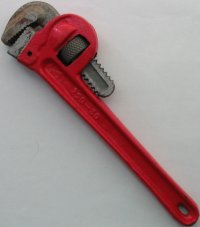Here is an in depth report of one fix from yesterdays mending workshop. More posts, about the other things fixed, are coming soon.
At the last mending session mr A didn't manage to fix the broken electronic screw driver, but this time he wasn't going to give up. The problem with it was that the switch that controls the turning direction (clock wise / counter clock wise) had a glitch; some times it would work and some times not.
The first image shows the gutted screwdriver after it had been taken apart.
The battery was soldered to two wires that connected it to the circuit board, so the first thing to do was to unsolder one of the wires (to avoid electrical shorts while handling the circuit board).
Next, the faulty switch was unsoldered. Mr P managed to take the small switch apart (the second image) and we could conclude that the glitch was due to mechanical wear. After putting the switch back together it worked better, but not perfect; another solution was required.
On closer inspection of the switch and the circuit board we figured out how the circuit operated. This is going to be a bit technical, leave a comment if you have any questions. The switch is a
double pole double throw (DPDT) type and it was used to control the direction of current flow through the motor. This type of circuit is commonly used for electrical motors and is called a
H-bridge. It's really not as complicated as it sounds. Have a look at the third image if you are curious about how the h-bridge was connected.
Unfortunately we didn't have any spare DPDT switches to replace the faulty one with. We did however have a bunch of single pole dual throw switches (SPDT). And using two of those you can get the same functionality as with the DPDT switch. So we soldered wires to where the switch once was and added the two switches. In the fourth image you can see the switches sticking out.
And guess what, it works!
But you can't really have switches hanging like that, so in one final step we glued the switches to the side of the screw driver. Notice how, in the last image, we used a rubber band to hold the switches in place.

























